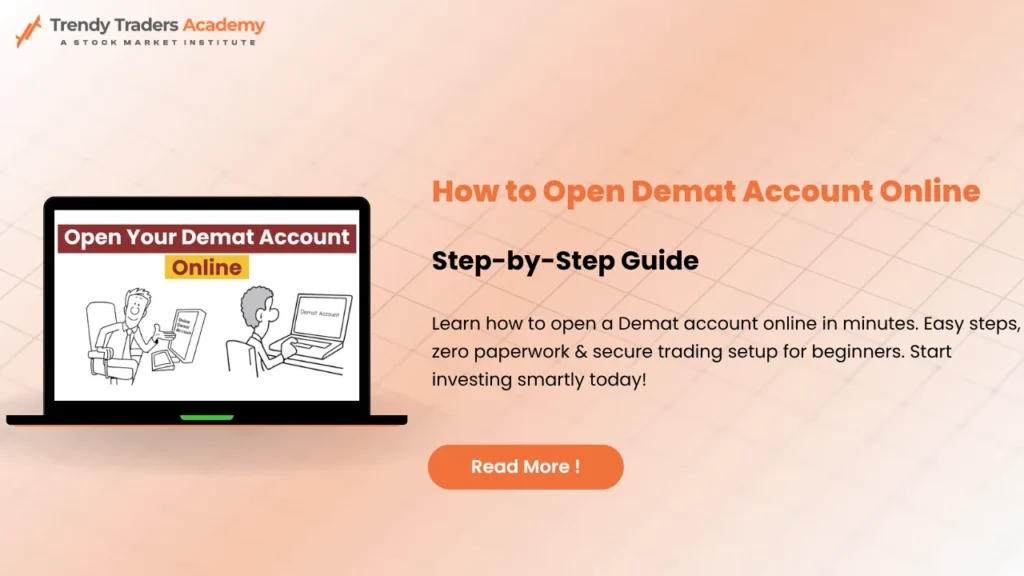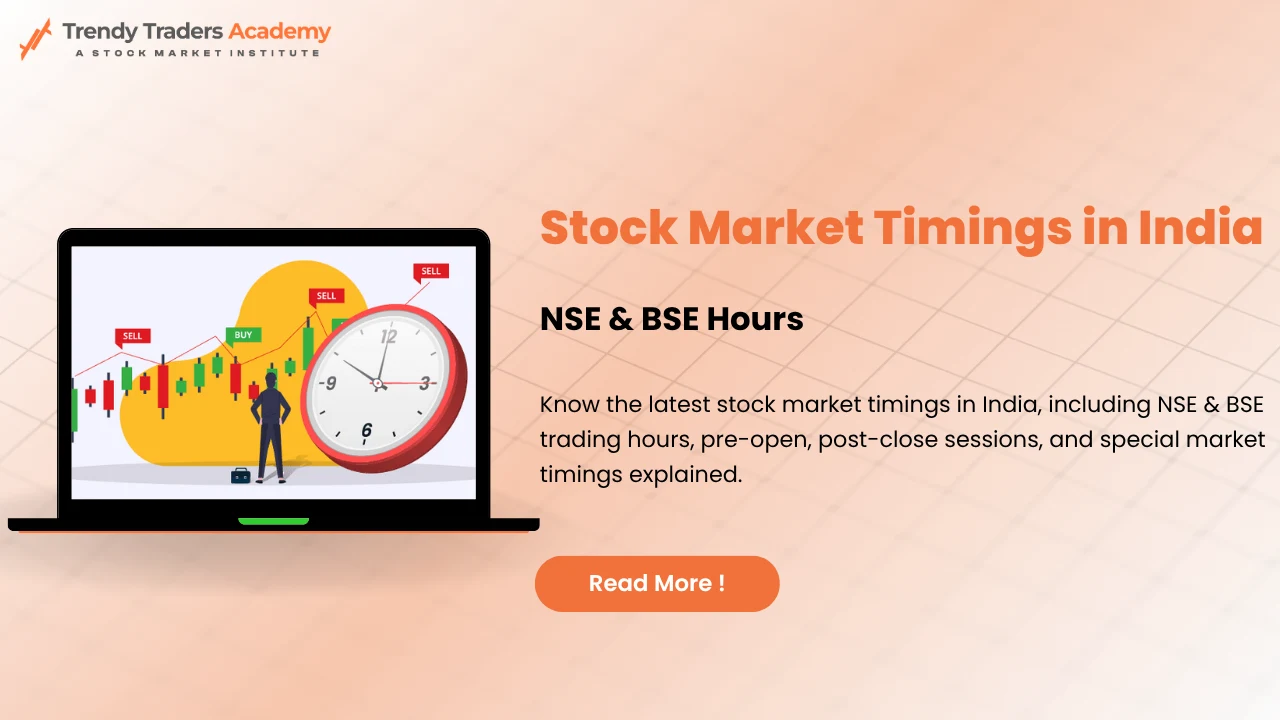
How to Open Demat Account in Online: The Simple, Original Handbook for Beginners
Want to buy shares or mutual funds from your phone or laptop? To start, you need a demat account. If you want to know exactly how to open demat account in online—and why it matters—this guide will help, step by step. We’ll explain what a demat account is, the different kinds, required documents, how accounts are handled in India, and answer real beginner questions, all in plain, fresh language.
What is Demat Account ? Why Do You Need One?
A “demat account” is like a safe deposit box on your smartphone. Instead of holding money, it keeps all your shares, ETF units, bonds, and mutual fund holdings as digital records. There’s no paperwork—you buy, sell, and hold everything online.
Why you need it:
It’s compulsory for buying/storing stocks on any Indian exchange.
It prevents loss, theft, or forgery—no more worry about paper certificates.
Managing and selling your investments is instant—just a few clicks.
Types of Demat Account: Find Your Fit
Before you click on “open demat account,” know your options:
Account Type | Who Can Use It | What’s Special |
Regular | Any Indian resident adult | Most common; standard choice |
BSDA (Basic) | Small investors | Lower costs for smaller values |
Repatriable | Indian NRIs (sending money abroad) | Allows overseas transfers |
Non-Repatriable | NRIs (keeping money in India) | Funds stay within India |
For most people, a Regular demat account does the job. Choose BSDA if you plan low investments. NRIs must select between the last two options.
How to Open Demat Account Online: Stepwise Fresh Guide
You don’t need to visit a branch; starting a demat account is now simpler than ever.
Step 1: Pick the Right Partner
- A “Depository Participant” (DP) can be a bank (like HDFC, SBI), a brokerage (e.g., Zerodha, Upstox), or a fintech app.
- Compare annual charges, features, and user reviews before choosing.
Step 2: Begin the Application
- Use the DP’s official website or mobile app.
- Fill in your full name, address, phone, PAN, Aadhaar, email, and upload a recent photo.
- Choose your preferred type of demat account.
Step 3: Upload Required Documents
- PAN card for ID proof
- Aadhaar card, driver’s license, or passport for address
- Bank account proof (cancelled cheque or statement)
- Digital signature—often done with your finger on a mobile screen
- Recent photo (can be taken from phone gallery/camera)
Step 4: Do e-KYC Verification
- Complete a quick video call or record a short selfie video holding your document (as per instructions).
- Sometimes, sign using Aadhaar e-sign via OTP.
Step 5: Check & Submit
- Look over your info.
- Submit the form—track your application status from your account/dashboard.
Step 6: Activation & Use
- Your demat details and login info arrive by SMS or email after DP checks your KYC.
- Usually, your new account is ready within 24–48 hours.
Opening Demat Account Without a Broker: Can You?
Following the submission of your compiled information, the DP will go through it and grant your account. It usually takes 1-3 business days depending on the distance between us and the client. You will receive a notification either through a mail alert or a text message informing the activation of your Demat account. The DP will also share with you your Demat account number – known as Beneficial Owner Identification (BOID) – and facilitate login to their web terminal.
Redemption of Demative Account Charges
Yes, you can!
- Banks and government depositories (like NSDL and CDSL) let you apply directly.
- You just fill the online form, provide documents, verify, and get your demat number.
- If you only wish to hold shares (never trade), this works well.
- If you plan to buy/sell actively, you’ll also want to add a “trading account” (often offered together by most providers).
What Documents Are Needed? Quick List Table
Needed For | What You Give |
Identity | PAN (required), Aadhaar, passport, or voter ID |
Address | Aadhaar, utility bill, or bank statement |
Bank Linking | Cancelled cheque, e-statement, or passbook |
Photo | Any clear smartphone photo or scan |
Signature | Draw/write on paper and click a picture |
Income Proof* | Only for options/F&O trading |
*Skip for standard demat for stocks or mutual funds.
Benefits of a Demat Account: Why It’s Now Essential
- No paperwork: All investments stored and tracked online.
- Instant transfers: Buy, sell, or move assets anytime.
- High security: Protected by PIN, password, and OTP controls.
- Integrated investing: Stocks, bonds, mutual funds in one place.
Types of Demat Account: At a Glance

Type | Best For | Account Limit |
Regular | Most retail investors | Unlimited value |
BSDA | Small/inactive users | ₹2 lakhs holding |
Repatriable | NRIs (abroad funds) | NRE/NRO linkage |
Non-repatriable | NRIs (India) | NRO linkage only |
Quick-Compare Table: Regular vs Basic vs NRI Demat
Feature | Regular | BSDA | NRI (Repatriable) | NRI (Non-repatriable) |
Who can open | Residents | Residents | Non-residents | Non-residents |
Max holding | Unlimited | ₹2 lakhs | Unlimited | Unlimited |
Fund transfer | Both ways | Both ways | Can go overseas | India only |
Cost | Standard fees | Lowest fees | NRE/NRO accounts | NRO account |
After You Open Your Demat Account
- Your unique client ID and account number lets you log into apps or websites anytime.
- Buy shares, apply for IPOs, or track all your listed assets paper-free.
- Want to gift shares or change your bank? Simply update details online; no need for branch visits.
Tips for Fast and Smooth Demat Opening
- Use your Aadhaar-linked mobile for instant e-KYC and e-sign.
- Scan or photograph all documents with good light—blurry images can slow approval.
- Set a strong password once your account is live.
- Download your DP’s official app for easy monitoring anywhere, anytime.
- Nominate a beneficiary early—it’s free and important.
Myths Busted
- You need to visit a branch. – No, fully digital onboarding is now standard.
- Paper documents are required. – No, digital uploads and e-signing suffice for most.
- You need lots of money to start. – False, many accounts have no minimum balance.
- Demat is just for stocks. – You can also hold mutual funds, bonds, and ETFs without paperwork.
Handy Summary Table: Everything You Need to Know
What? | Fresh Fact |
how to open demat account in online | Digital KYC, smartphone photo uploads, video or Aadhaar OTP for e-sign |
what is demat account | Secure, online locker for all your digital investments |
types of demat account | Regular, BSDA, NRI (repatriable & non-repatriable) |
Fee structure | Compare before you sign up |
Can you open without broker? | Yes—banks, NSDL/CDSL allow direct online accounts |
Conclusion
Opening a demat account online is simple and faster than ever. By grasping knowledge on how to open demat account in online, one opens their doors to investing in stocks, mutual funds, bonds and much more, all from a single tap of the phone and computer. One just needs to select their provider, keep documents ready and follow the easy steps that have been described in this blog. One must always review costs, pick the correct type of demat account for their needs and enjoy easy and seamless investing from today onwards.
FAQ'S
What is a demat account?
It’s a digital account to hold and track your shares, mutual funds, ETFs, and bonds. Think of it as an online locker that makes transactions secure and paperless.
How to open demat account in online with zero hassle?
Pick a well-rated broker or bank, complete their digital form, update your KYC, upload documents by clicking pictures, and confirm via video call or OTP.
Do I need a trading account too?
Yes, if you want to actively buy/sell stocks. Most modern brokers bundle demat and trading accounts for free or a small fee.
Can I have multiple demat accounts?
Yes, you can open as many as you wish with different providers—but only one account per provider per PAN.
Are all types of demat account free?
Many now offer free account opening, but check annual or transaction fees for your type (BSDA is cheapest for small investors).











